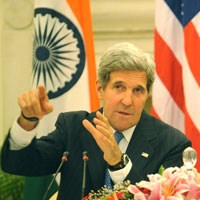If a national security policy is to be worth more than the paper it is printed on, it needs to serve as a guide to making tough policy choices by outlining priorities and indicating where trade-offs may have to be made. But controversies around two long-standing U.S. strategic objectives show how poorly strategy is guiding current policy.
These objectives are to develop a new and deeper partnership between the United States and India and to open up new sources of energy in the Western Hemisphere to decrease U.S. dependence on overseas sources. One secondary impact of these strategies would be to weaken Russia’s clout as an energy superpower, especially in relation to Europe. Another would be to weaken the emerging coalition of “eastern autocracies”—Russia and China—and “southern democracies”—Brazil, India and South Africa—that has in recent years worked to block U.S. and European initiatives in various international bodies.
The Obama administration has, of course, embraced other strategic interests, such as slowing down the rate of climate change, combating human trafficking and upholding the rule of law. When all of these preferences can be accommodated, policy moves forward. However, it is not apparent that the administration has a mechanism for working out the problems when competing imperatives clash. When clear organizing principles that create policy priorities are absent, U.S. efforts fragment into a series of separate and unconnected decisions that make all objectives more difficult to achieve.

